Can pigs fly?
Perhaps they can, but with US stock markets soaring and wage pressures intensifying, it’s very hard to see the Fed engaging in aggressive rate cuts.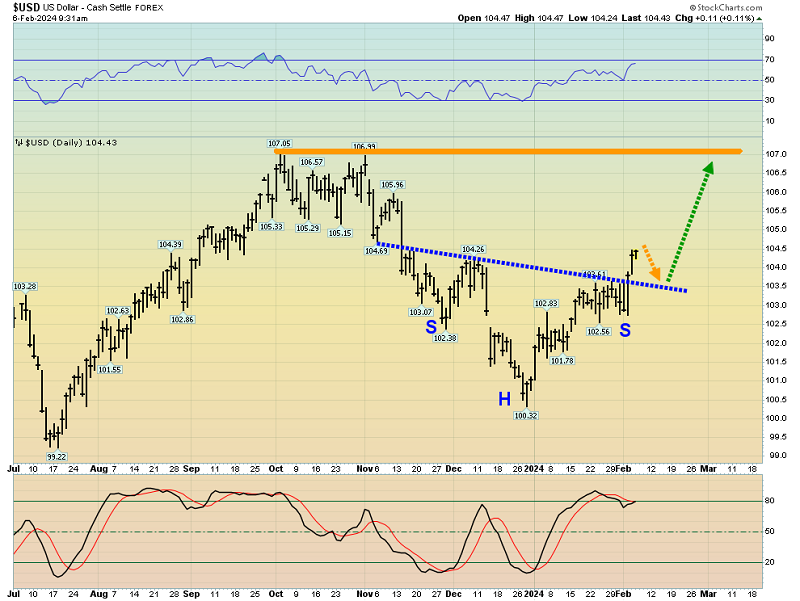
The current action of the dollar fits with the “Less cuts, and not until later” scenario that US economic fundamentals imply.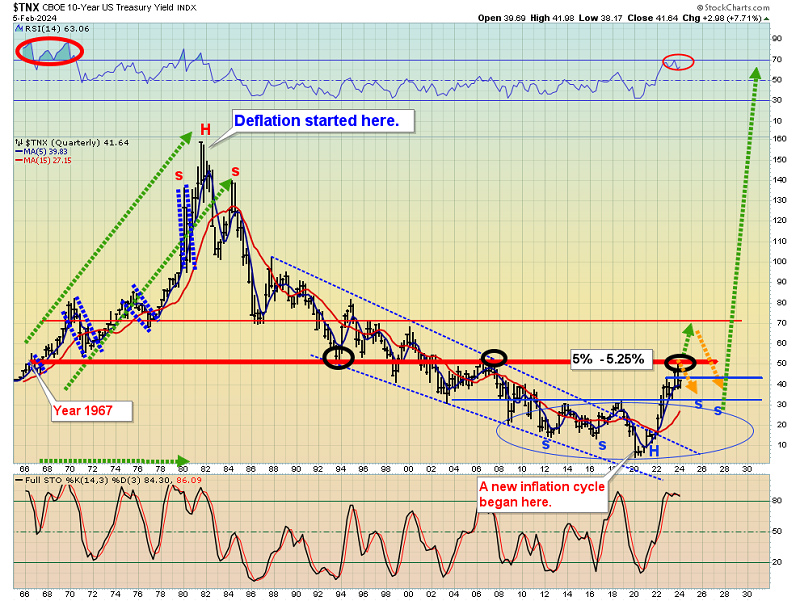
The long-term US rates chart. A pause was near-certain at the 5% marker, and it happened.
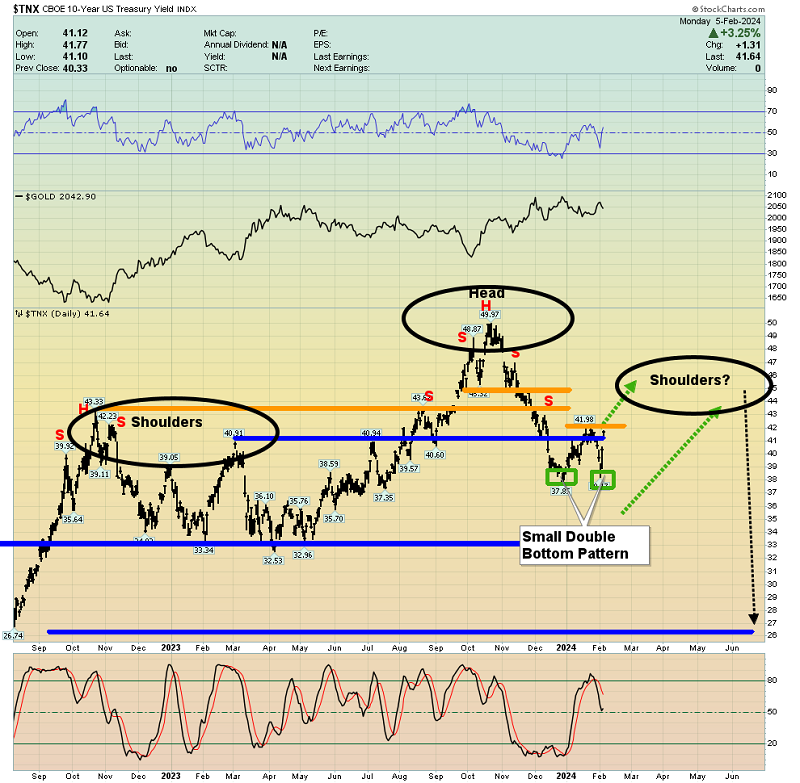
In regards to what’s next, the outlook is murkier. On the daily chart, there’s a small double bottom in play and the current rally might be the start of the right shoulder of a large H&S top pattern.
What does all this murky action for rates and the dollar mean for gold, silver, and mining stocks?
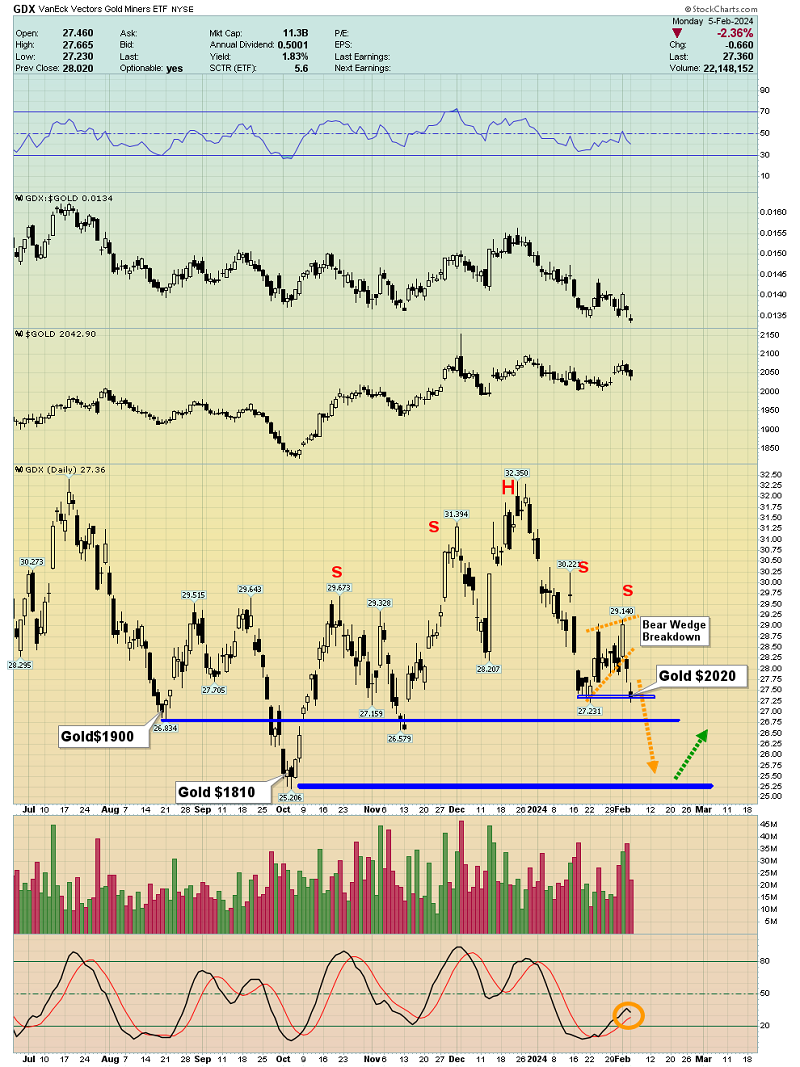
The GDX chart. The recent price action of the miners has been disappointing for several reasons.
For starters, with gold at about $2020 now, GDX is barely above where it was in August when gold was down at $1900.
It’s also only about $2/share above where it was in October when gold was down at $1810!
With gold stocks failing against gold and “wageflation”, strong GDP growth, and surging stock markets in play, aggressive rate cuts look more like a hope than a prediction. So, what are the winning tactics for investors?
The “Gold stock buy zones” chart. Investors who ignore the major support and resistance zones for gold do so at their peril.
These zones are defined by previous intermediate and major trend highs and lows. Focusing on anything else for actual buying and selling can be dangerous. At the key support zones, investor morale is essentially destroyed, making it all the harder to buy but it must be done.
With sentiment “in the tank”, I urged gold stock bugs to buy miners at key gold support zones of $1900 in August and $1810 in October, and to sell them with 20% gains and/or at the previous highs of $2080 for gold.
The bugs who did that are in good spirits and are ready to buy again, but only at $1973 and $1928.
The Western fear trade for gold (defined as the implosion of the US fiat and debt-oriented empire) is more of a slow-motion train wreck than an inferno at least for now.
Until that inferno happens, it’s critical that investors act with extreme prudence, or they risk becoming what I call “Gold bull era roadkill”.
Current US economic growth and wage pressures are likely to continue for a long time, creating an economy and stock market that resembles the time of 1966-1980. Extreme events like gold revaluation are likely, but not for another 15-20 years. The US government’s obsession with fiat and debt is extreme, but the slow pace of de-dollarization means it can get a lot more extreme before the government looks like the exploding Hindenburg.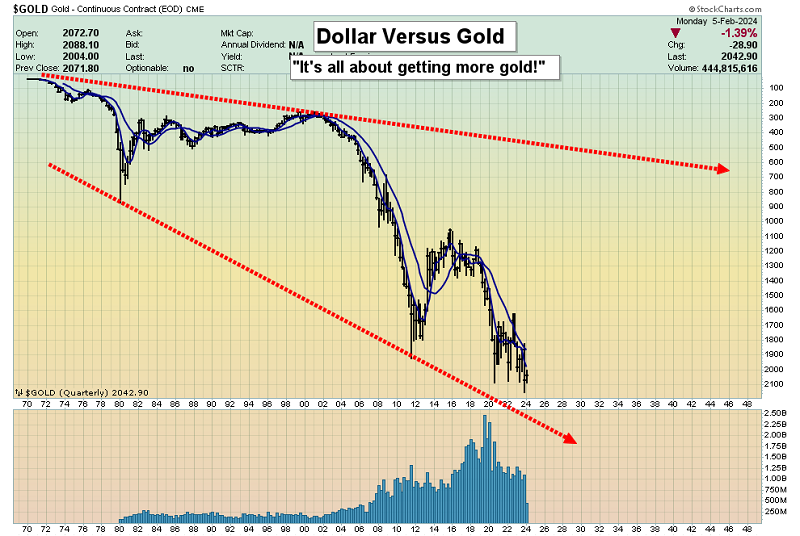
As the citizens of China and India continue to rise economically, gold’s permanent position as the world’s number one currency will be greatly enhanced.
The only question is this: Before they buy, do mining stock investors have the discipline to wait for the big price sales (sales that involve both time and price) that put gold at support zones of significance?
The long-term XAU gold stocks index chart. Here’s the bottom line:
While gold bullion has absolutely destroyed US fiat over the past 40 years, gold stocks have gone nowhere against that same fiat, and they have been de facto annihilated against gold.
The good news (the great news, really) is that investors who consistently buy the significant price sales for gold that climax at major support zones these investors look great, and they feel great too!
The bottom line: Averaging down on 40 years of mining stock pain won’t stop the pain. Gold bugs who over-allocated to the miners (and did it on price rallies) should shift their focus to increasing their share of gold bullion and buy gold if it trades at or near $1973. For investors who are not over-allocated and have good fiat cash flow and reserves, mining stocks can be bought with gusto at $1973, and sold with even more gusto, on the coming and inevitable surges to $2080 and $2145!
